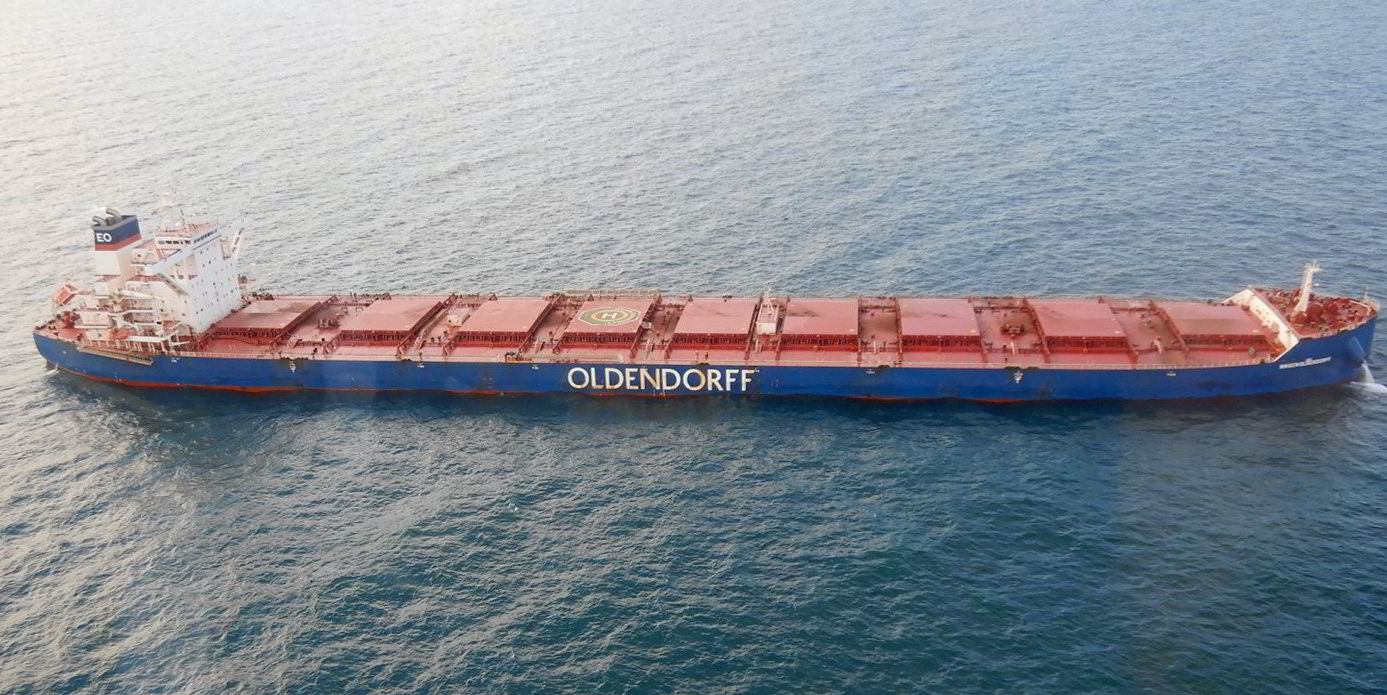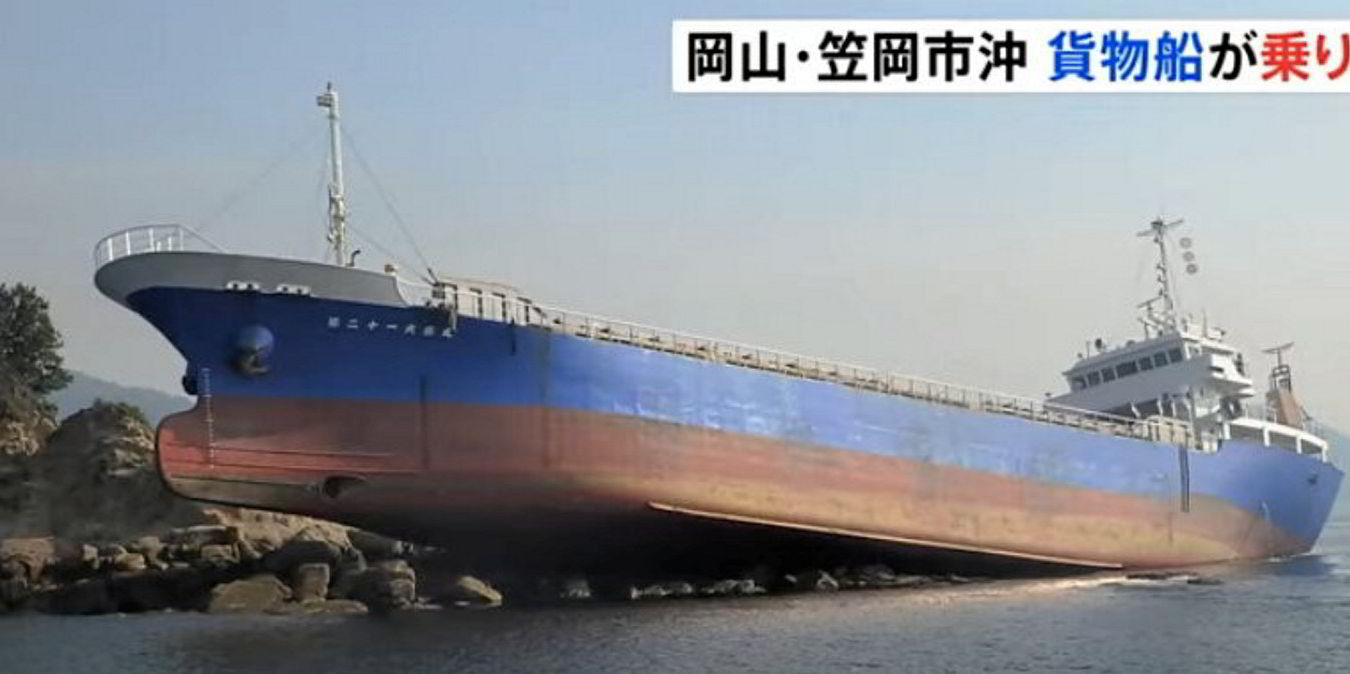An Oldendorff Carriers’ chartered bulker suffered substantial damage in a grounding off Australia last year, an accident report has revealed.
The 208,600-dwt Hagen Oldendorff (built 2020) was holed while departing Port Hedland on 9 April when rudder indicators failed, the Australian Transport Safety Bureau (ATSB) said.
The newcastlemax had a pilot on board at the time.
About 50 minutes into the journey, the vessel was travelling through the harbour channel at 6.8 knots, with one tug connected to its stern and two others closely following.
The pilot then observed the lighting extinguish on the rudder angle indicators, an interim report found.
As the ship had begun to swing to starboard, the pilot ordered port rudder, and asked the tug to pull the stern to starboard, to counteract the swing.
The ship’s voyage data recorder showed that it subsequently began to move to port at an increasing rate.
To counteract this, the pilot directed the tug to pull the stern to port, but also ordered the rudder “hard to port”.
The captain followed this direction, but then queried it after about 30 seconds.
Subsequently, the pilot asked for the rudder to be put hard to starboard instead, ATSB said.
“The rudder angle indicator failure meant the pilot and ship’s crew were unable to ascertain the rudder’s position, or whether it was responding to commands,” the report found.
Grounded on edge of the channel
Although the rate of turn to port reduced after this change, it was not enough to prevent the Hagen Oldendorff grounding on the edge of the dredged channel.
“Upon coming into contact with the channel’s edge, the ship’s bow swung away from the side of the channel, back to starboard,” ATSB chief commissioner Angus Mitchell said.
“With tugs assisting, the ship was taken out to anchorage for inspection.”
A check discovered that the tracking motor of the bridge’s omnidirectional rudder angle indicator had burnt out, causing a short circuit that tripped the circuit breaker, causing a power outage in all the rudder angle indicators available on the bridge.
An underwater hull inspection identified substantial damage, including holes in the port side and bottom shell plating, and the failure of the transverse bulkhead between the number 1 and 2 port double-bottom water ballast tanks, allowing flooding between them.
Temporary repairs were conducted, and on 18 May the ship departed the north-west Australian port on a direct voyage to its discharge port in China. After unloading, it proceeded to the shipyard in Zhoushan for permanent repairs.
The full investigation will include a review of Port Hedland Pilots’ operating procedures, practices and training, as well as analysis of the conduct of the pilotage and the effectiveness of bridge resource management.
The Hagen Oldendorff’s steering gear arrangement, controls and indicators will also be assessed, and its procedures and emergency readiness reviewed.
“Should a critical safety issue be identified during the course of the investigation, the ATSB will immediately notify relevant parties so appropriate and timely safety action can be taken,” Mitchell said.
The interim report noted that the Pilbara Ports Authority has, since the incident, issued a notice requiring that a suitably qualified and competent person stands by in the steering gear room during a transit of the Port Hedland channel.





